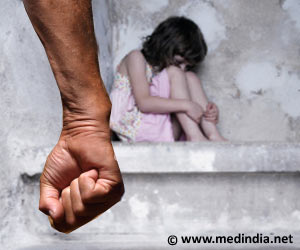The researchers used data from the Danish LIFE course (DANLIFE) cohort, which includes continuously recorded information from numerous nationwide registers. They identified 1,263,013 children who were alive and living in Denmark until their 16th birthday and who were not diagnosed with CVD or congenital heart disease during this time.
They divided them into five groups based on adversity experienced between the ages of 0 and 15: 1) those that experienced low adversity during childhood, 2) early life material deprivation (for instance, poverty and long-term unemployment in the family during early life), 3) persistent deprivation (material deprivation experienced through into adolescence), 4) loss or threat of loss (high rates of serious illness or death among parents or siblings), and 5) high adversity (covering exposure to any or all of the previous types of adversity, particularly dysfunctional and stressful family relationships, experienced on average every year during adolescence).
Advertisement
They adjusted their analyses to take into account factors that could also increase the risk of CVD, such as age, maternal age at birth, parental origin, and any parental diseases of the heart, blood vessels, or metabolism.
In supplementary analyses, they also adjusted for gestational age and parental education. They excluded people whose parents had an illness related to the heart or metabolism, such as diabetes or heart disease, which might predispose their children to develop these conditions.
They found there was little difference in the risk of developing CVD between the 2,195 men and 1,923 women in the study. The risk was highest among people who experienced severe illness or death in the family and among those who experienced high and increasing rates of adversity throughout childhood and adolescence.
Traumatic Childhood Increases the Lifelong Risk of Heart Disease
Childhood is a sensitive period characterized by rapid cognitive and physical developments; frequent and chronic exposure to adversity in childhood may influence the development of the physiological stress response, and this may provide an important explanation for the mechanisms underlying these findings.
The researchers plan to investigate the possible underlying mechanisms for their findings to understand the impact of childhood adversity on CVD prognosis and survival. This will include access to health care, possible non-compliance with treatments, and other health problems among children from socially difficult backgrounds.
The current study has built on earlier work the researchers carried out that showed a substantially higher risk of premature mortality, including deaths due to CVD, and hospitalizations due to CVD among young adults, who had experienced adversity in childhood and adolescence.
The incidence of CVD is low in early adult life but increases substantially during this period. This highlights the importance of research into non-genetic early life risk factors, which may be targeted for early prevention.
The experience of adversity is common among children, and this study shows that children who experience long-term and severe stress from serious illnesses and death in the family, and children who are exposed to high rates of adversity, including deprivation, family loss, and dysfunctional and stressful family relationships, have a higher risk of developing CVD in early adulthood.
Targeting the social origins of such adversity and ensuring supportive structures for families who are, for example, struggling with disease in the family may potentially carry long-term protective effects.
Source: Eurekalert



